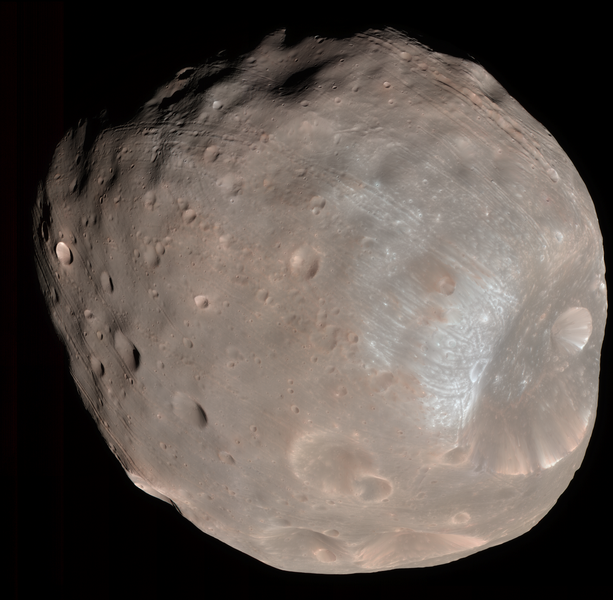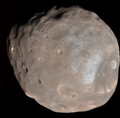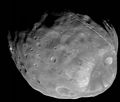Ta'ãnga:221831main PIA10368.png

Tamaño de esta previsualización: 613 × 600 píxeles. Otras resoluciones: 245 × 240 píxeles | 491 × 480 píxeles | 785 × 768 píxeles | 1047 × 1024 píxeles | 2094 × 2048 píxeles | 3374 × 3300 píxeles.
Marandurenda moambue'ỹre (3374 × 3300 píxeles; tamaño de archivo: 15,26 MB; tipo MIME: image/png)
Marandurenda rembiasakue
Ejopy peteĩ ára/aravo rehe rehecha hag̃ua pe marandurenda ojehechaukaháicha upe jave.
| Ára/Aravo | Michĩháicha | Tuichakue | Puruhára | Jehaimombyky | |
|---|---|---|---|---|---|
| ko’ag̃agua | 11:33 10 jasyrundy 2008 |  | 3374 × 3300 (15,26 MB) | Ævar Arnfjörð Bjarmason | {{Information |Description= Phobos from 6,800 Kilometers (Color) |Source= http://www.nasa.gov/mission_pages/MRO/multimedia/pia10368.html |Date= |Author= |Permission= |other_versions= http://www.nasa.gov/images/content/221831main_PIA10368.tif }} Downloade |
Marandurenda jeporu
Las siguientes páginas usan este archivo:
Marandurenda jepuru opaite tembiapópe
Ko'ã ambue wiki oipuru ko marandurenda:
- Jeporu ab.wikipedia.org rehe
- Jeporu az.wikipedia.org rehe
- Jeporu ba.wikipedia.org rehe
- Jeporu be.wikipedia.org rehe
- Jeporu ca.wikipedia.org rehe
- Jeporu ce.wikipedia.org rehe
- Jeporu cs.wikipedia.org rehe
- Jeporu da.wikipedia.org rehe
- Jeporu en.wikipedia.org rehe
- Jeporu eu.wikipedia.org rehe
- Jeporu fr.wikipedia.org rehe
- Jeporu fur.wikipedia.org rehe
- Jeporu ga.wikipedia.org rehe
- Jeporu gl.wikipedia.org rehe
- Jeporu gv.wikipedia.org rehe
- Jeporu he.wikipedia.org rehe
- פובוס (ירח)
- פורטל:מתמטיקה/הידעת?/קטעי הידעת
- פורטל:מדעי החלל/הידעת?/קטעי הידעת?
- תבנית:הידעת? 6 בספטמבר - סדרה 1
- פורטל:מדעי החלל/הידעת?/13
- פורטל:גרמניה/הידעת?/קטעי הידעת?
- פורטל:גרמניה/הידעת?/42
- תבנית:הידעת? 6 בספטמבר 2012
- ויקיפדיה:הידעת?/2012/ספטמבר
- ויקיפדיה:הידעת?/2015/ספטמבר
- תבנית:הידעת? 6 בספטמבר 2015
- ויקיפדיה:הידעת?/2017/ספטמבר
- תבנית:הידעת? 7 בספטמבר 2017
- ויקיפדיה:הידעת?/2020/ספטמבר
- תבנית:הידעת? 3 בספטמבר 2020
- פורטל:פיזיקה/הידעת?/קטעי הידעת
- ויקיפדיה:הידעת?/2022/ספטמבר
- תבנית:הידעת? 3 בספטמבר 2022
- פורטל:פיזיקה/הידעת?/48
- פורטל:מתמטיקה/הידעת?/68
- Jeporu hy.wikipedia.org rehe
- Jeporu ia.wikipedia.org rehe
- Jeporu it.wikipedia.org rehe
- Jeporu ka.wikipedia.org rehe
- Jeporu kk.wikipedia.org rehe
Ver más uso global de este archivo.


